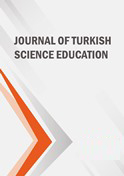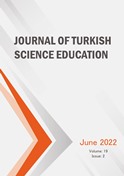Developing of a Problem Solving Essay Test Instrument (PSETI) in an Instruction of Basic Science Concepts in Ethno Science Context for Preservice Elementary School Teachers
Research Article
Keywords:
Instrument, test, Problem Solving, Science InstructionAbstract
Assessment of problem solving skills for preservice teachers is important in a science instruction. The purpose of this study is to develop a Problem Solving Essay Test Instrument (PSETI) to measure the achievement of problem solving skills of preservice teachers in an instruction of basic science concepts. The research method is research and development. The study implemented Plomp's Model with steps as the following: (1) initial research, (2) drafting a prototype, and (3) assessment stage. The sample of this study were 40 preservice elementary school teachers of basic science concepts. Data analysis of content validity used the Aiken agreement index (V) and construct validity was done by Partial Credit Model (PCM) of One Logistic Parameter (1-PL) using QUEST program. The results showed that the Aiken index value was 0.7 for the validity of language clarity category and the value of 0.84 for theory appropriateness with a good validity level. The INFIT t value of 21 items was between ± 2.0. Hence, it was concluded that the instruments fitting the items and test fulfilled the 1-PL testing model. PSETI instrument reliability was 0.45 and it can be concluded that the instrument was appropriate for measuring problem solving skills.



